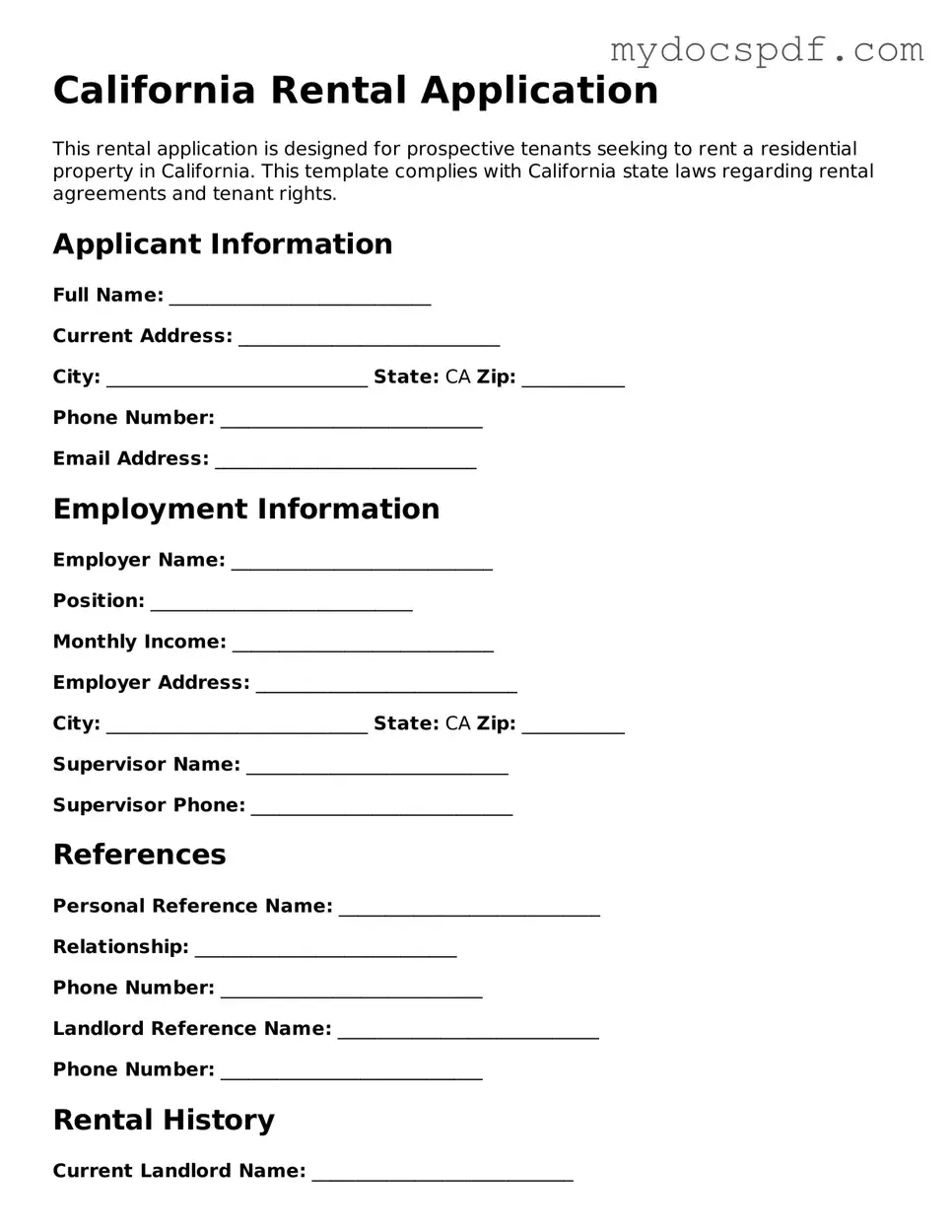California Rental Application
This rental application is designed for prospective tenants seeking to rent a residential property in California. This template complies with California state laws regarding rental agreements and tenant rights.
Applicant Information
Full Name: ____________________________
Current Address: ____________________________
City: ____________________________ State: CA Zip: ___________
Phone Number: ____________________________
Email Address: ____________________________
Employment Information
Employer Name: ____________________________
Position: ____________________________
Monthly Income: ____________________________
Employer Address: ____________________________
City: ____________________________ State: CA Zip: ___________
Supervisor Name: ____________________________
Supervisor Phone: ____________________________
References
Personal Reference Name: ____________________________
Relationship: ____________________________
Phone Number: ____________________________
Landlord Reference Name: ____________________________
Phone Number: ____________________________
Rental History
Current Landlord Name: ____________________________
Address: ____________________________
City: ____________________________ State: CA Zip: ___________
Duration of Tenancy: ____________________________
Reason for Leaving: ____________________________
Additional Information
Do you have pets? (Yes/No) ____________________________
Have you ever been evicted? (Yes/No) ____________________________
If yes, please explain: ____________________________
Emergency Contact Name: ____________________________
Emergency Contact Phone Number: ____________________________
Signature
By signing below, I confirm that the information I have provided is accurate and complete:
Applicant Signature: ____________________________
Date: ____________________________
